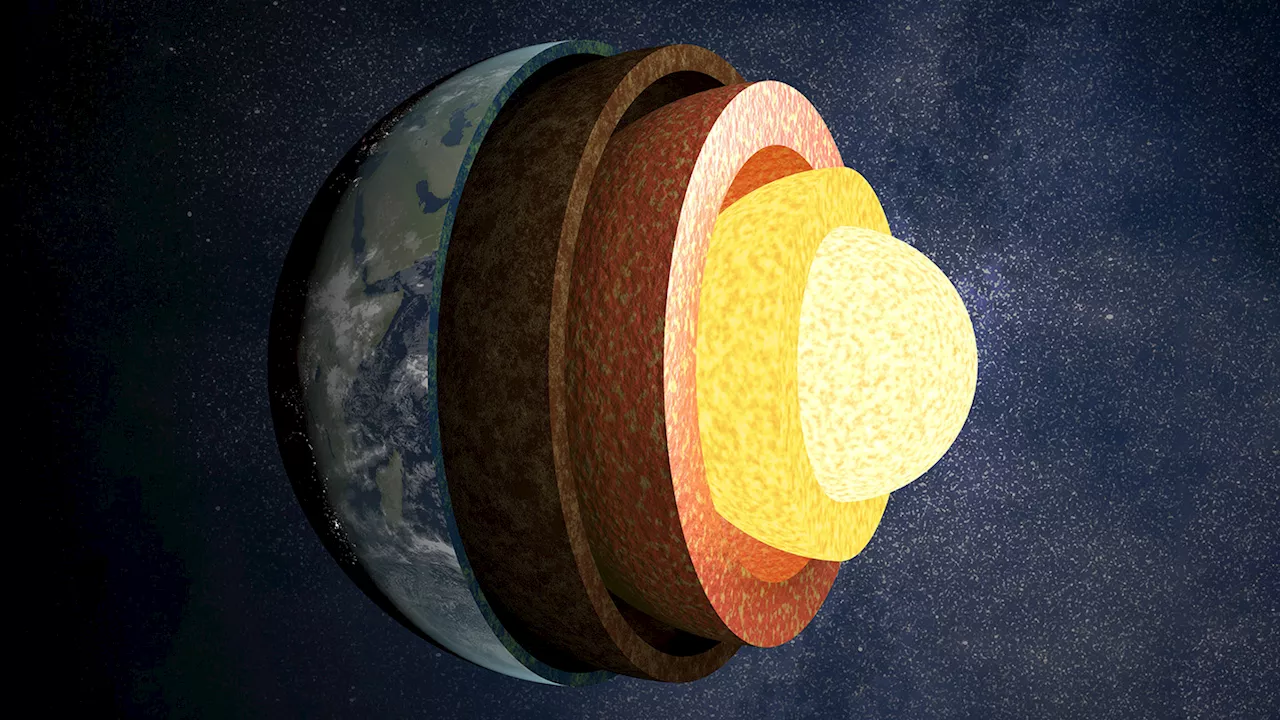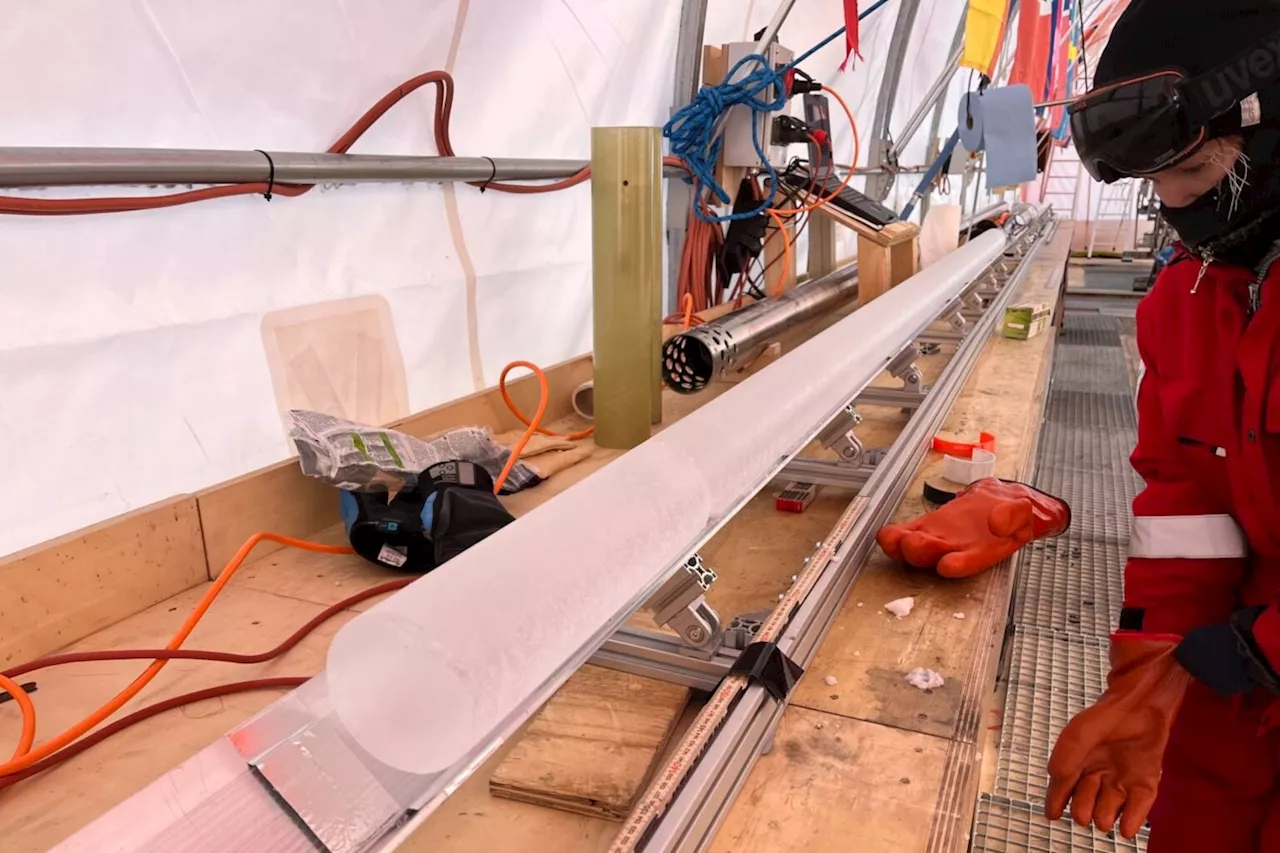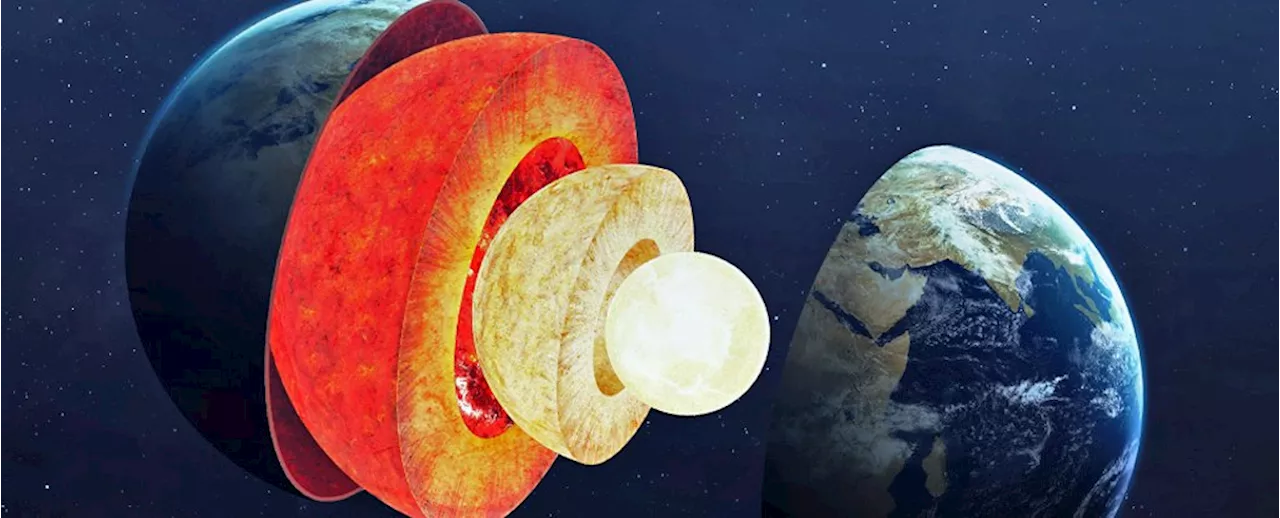New research suggests that Earth's inner core, already known for its extreme heat and density, might have a smaller, even hotter layer at its center. Scientists analyzed seismic wave data and found evidence of distinct changes in how waves travel through the inner core, hinting at a possible two-layered structure.
While most of us take the ground beneath our feet for granted, written within its complex layers, like the pages of a book, is Earth's history. Our history. Research shows there are little-known chapters in that history, deep within Earth's past. In fact, Earth's inner core appears to have another even more inner core within it. Traditionally we've been taught the Earth has four main layers: the crust, the mantle, the outer core and the inner core.
Our knowledge of what lies beneath Earth's crust has been inferred mostly from what volcanoes have divulged and what seismic waves have whispered. From these indirect observations, scientists have calculated that the scorchingly hot inner core, with temperatures surpassing 5,000 degrees Celsius (9,000 Fahrenheit), makes up only 1 percent of Earth's total volume. But a few years ago, Stephenson and colleagues found evidence Earth's inner core may actually have two distinct layers. Stephenson explained at the time the team used a search algorithm to trawl through and match thousands of models of the inner core with observed data across many decades about how long seismic waves take to travel through Earth, gathered by the International Seismological Centre, Journal of Geophysical Research: Solid Earth. how differences in the make-up of its material alters the properties of seismic waves – and found some were more likely than others. While some models suggest the material of the inner core channels seismic waves faster parallel to the equator, others indicate the mix of materials allows for faster waves more parallel to Earth's rotational axis. Even then, there are arguments about the exact degree of difference at certain angles. The study here didn't show much variation with depth in the inner core, but it did find there was a change in the slow direction to a 54-degree angle, with the faster direction of waves running parallel to the axis. We found evidence that may indicate a change in the structure of iron, which suggests perhaps two separate cooling events in Earth's history, Stephenson' The details of this big event are still a bit of a mystery, but we've added another piece of the puzzle when it comes to our knowledge of the Earth's inner core. The presence of an innermost layer has been suspected but we are limited by the distribution of global earthquakes and receivers, especially at polar antipodes. But their conclusions align with other studies on the anisotropy of the innermost inner core. Future research may fill in some of these data gaps and allow scientists to corroborate or contradict their findings, and hopefully translate more stories written within this early layer of Earth's history
EARTH SCIENCE INNER CORE GEOPHYSICS SEISMIC WAVES PLANETARY SCIENCE
United States Latest News, United States Headlines
Similar News:You can also read news stories similar to this one that we have collected from other news sources.
 Earth’s inner core may be changing shapeEarthquake data suggest that all or small patches of the inner core's surface may be swelling and contracting.
Earth’s inner core may be changing shapeEarthquake data suggest that all or small patches of the inner core's surface may be swelling and contracting.
Read more »
 Something in Earth's Core May Be Altering The Length of DaysThe Best in Science News and Amazing Breakthroughs
Something in Earth's Core May Be Altering The Length of DaysThe Best in Science News and Amazing Breakthroughs
Read more »
Canada Rare Earth Secures 70% Stake in Laos Rare Earth RefineryCanada Rare Earth announced it has signed a Memorandum of Understanding with a Laotian company to purchase 70% of a fully permitted rare earth refinery. The refinery, with a capacity of 3,000 tonnes per year, was built 12 years ago but has remained idle due to policy changes. The Lao government is now supporting the refinery's operation and encouraging in-country processing of rare earth concentrates. The refinery is expected to be operational in Q4 2025 after minor refurbishments.
Read more »
 Canada Rare Earth to Acquire 70% Stake in Laos Rare Earth RefineryCanada Rare Earth (TSX.V: LL) has signed a memorandum of understanding to purchase 70% of a fully permitted rare earth refinery in Laos. The refinery, with a production capacity of 3,000 tonnes per year, is expected to be operational by Q4 2025 after modest refurbishments. The company aims to secure offtake agreements and investment to support the refinery's operation and ensure a stable supply of key rare earth oxides.
Canada Rare Earth to Acquire 70% Stake in Laos Rare Earth RefineryCanada Rare Earth (TSX.V: LL) has signed a memorandum of understanding to purchase 70% of a fully permitted rare earth refinery in Laos. The refinery, with a production capacity of 3,000 tonnes per year, is expected to be operational by Q4 2025 after modest refurbishments. The company aims to secure offtake agreements and investment to support the refinery's operation and ensure a stable supply of key rare earth oxides.
Read more »
 Antarctic Ice Core Unlocks 1.2 Million Years of Unbroken Climate History, Setting New RecordThe achievement represents the longest continuous record of Earth’s climate from an ice core.
Antarctic Ice Core Unlocks 1.2 Million Years of Unbroken Climate History, Setting New RecordThe achievement represents the longest continuous record of Earth’s climate from an ice core.
Read more »
 Android 16 may promote this Google app to a core app that cannot be uninstalledIzzy, a tech enthusiast and a key part of the PhoneArena team, specializes in delivering the latest mobile tech news and finding the best tech deals. Her interests extend to cybersecurity, phone design innovations, and camera capabilities.
Android 16 may promote this Google app to a core app that cannot be uninstalledIzzy, a tech enthusiast and a key part of the PhoneArena team, specializes in delivering the latest mobile tech news and finding the best tech deals. Her interests extend to cybersecurity, phone design innovations, and camera capabilities.
Read more »
